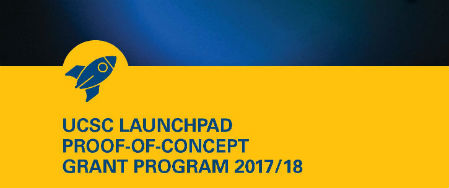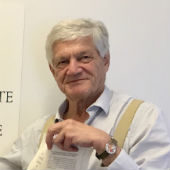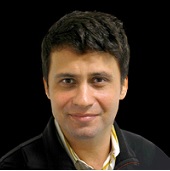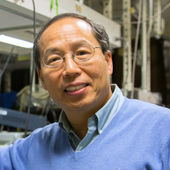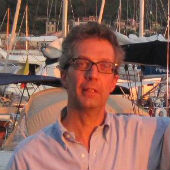The UCSC Industry Alliances & Technology Commercialization (IATC) Office is pleased to announce the Winter/Spring 2019 Launchpad Proof-of-Concept Grant award winners. Launchpad is one of seven innovation and entrepreneurship support programs under IATC's SPLICE program. Launchpad assists promising UCSC technologies in becoming commercially viable. In March, 2019, two innovative proposals were awarded $15,000 and $10,000, respectively.
Congratulations to the project leads of the Winter/Spring 2019 Launchpad grant awards:
BarUMIni beads for genome sequencing applications
Principal investigators: Dr. Ed Green, Balaji Sundararaman
This project is focusing on the generation and validation of BarUMini beads as well as Haplotype phasing using BarUMini beads. BarUMIni beads can be used for many genomic sequencing applications including haplotype phasing, genome assembly, targeted sequencing and transcriptome analysis. BarUMIni beads can also be used for cancer diagnostics, tissue transplant matching and other molecular diagnosis.
Volatile Organic Compound Sensor
Principal investigators: Peter Weiss, Mauricio Rojas-Andrade, David Durkin
Under this project, a volatile organic compound (VOC) sensing device is to be built and tested for the purpose of quantifying air emissions of VOCs. This invention will provide a simple, cost-effective method to determine the VOC content in the atmosphere which is applicable to a wide range of industries. The first application that this sensor is being developed for, is to quantify emissions of ethanol (EtOH) gas from the winery industries in California. VOC sensors are also needed in emerging industries such as composting facilities, breweries, and cannabis processing plants.
See Previous Winners:
March 2018
Radiation Hardened AC-Ultra-Fast Silicon Detector (UFSD)
This project from the SCIPP lab will increase the radiation tolerance of the particle detectors used in particle detectors by a factor of 5-10 times. Silicon detectors are at the heart of very large particle detectors such as the Large Hadron Colllider (LHC) in Geneva Switzerland and also smaller instruments in medical applications, for example the Proton CT Scanner, developed at UC Santa Cruz. This invention also has applications in the next generation medical applications for both diagnosis and treatment.
Detecting Tissue-Specific KRAS Mutations by Noncoding RNA
This invention transforms liquid biopsy by detecting RNA instead of DNA. While existing DNA based tests can show that a cancer-causing mutation is present they do not have tissue specificity. Using RNA this method allows specific determinations about the presence of cancerous mutations in lung and pancreatic tissue.
Alzheimer's - A New Approach: Evaluation of Short Chiral Peptides to Reduce Amyloid Beta Toxicity
This invention is a novel strategy to treat Alzheimer's that converts toxic Amyloid beta oligomers into Amyloid beta fibrils. Our patented chemical process uses mirror image peptides to do this conversion. The process has already been shown to successfully inhibit toxicity of the proteins that make up the plaque in preliminary studies.
October 2017
2017 Launchpad grant awards:
Bioconjugated Hollow Gold Nanospheres (b-HGNs) for Oral Cancer Imaging and Photothermal Therapy (PTT)
This project from Jin's lab deals with the in vivo testing of targeted hollow gold nanospheres (HGNs), particularly in cancer models. The main comercial value of this technology is a highly efficient cancer imaging and treatment modality with little-to-no side effects for the patient, compared to existing methods such as chemotherapy or radiation therapy. The reason for this is that the HGNs are made from gold and thus are very low in toxicity. The light used for activating the HGNs is harmless to normal tissue.
Development of AC-coupled Ultra-fast Silicon Detectors (AC-UFSD)
This project, developed and tested in the SCIPP labs, involves the production of silicon detectors with a radical simplification of the design that eliminates sensor gaps, leading to improved performance and a drastically reduced fabrication cost. Silicon detectors are at the heart of very large particle detectors such as the Large Hadron Colllider (LHC) in Geneva Switzerland and also smaller instruments in medical applications, for example the Proton CT Scanner, developed at UC Santa Cruz.
Keep on the lookout!
- the third and final call for Launchpad proposals
will be announced soon -
For more information, email IATCprograms@ucsc.edu


